
The Enchanting Charms of Trang
Discover Trang, Thailand's hidden paradise, where pristine beaches, lush jungles, and rich cultural heritage offer an unforgettable escape from the ordinary.
Trang, a hidden gem in southern Thailand, offers a serene escape from the bustling tourist hotspots. Known for its lush landscapes, crystal-clear waters, and vibrant cultural scene, Trang provides a unique blend of natural beauty and rich heritage. Whether you're lounging on pristine beaches or exploring the verdant jungles, Trang promises an unforgettable experience. The city is surrounded by stunning islands such as Koh Muk, famous for its Emerald Cave, and Koh Kradan, where you can enjoy snorkeling in turquoise waters. Trang's mainland also boasts beautiful waterfalls like Namtok Ton Te and Namtok Sai Rung, perfect for a refreshing dip after a day of exploration. Food enthusiasts will revel in Trang's culinary delights. The city is renowned for its dim sum breakfast, a tradition that reflects its diverse cultural influences. Don't miss the annual Trang Roast Pork Festival, where you can taste some of the best roast pork in Thailand. The night markets are bustling with vendors offering everything from fresh seafood to exotic fruits, ensuring a delightful gastronomic adventure. Trang's cultural heritage is equally captivating. Visit the ancient Wat Tantayaphirom, a temple that showcases stunning Thai architecture. The city also hosts vibrant festivals such as the Vegetarian Festival and the Trang Underwater Wedding Ceremony, where couples exchange vows underwater. These events highlight the local traditions and provide a unique glimpse into the way of life in Trang. For those seeking adventure, Trang offers various activities such as diving, kayaking, and trekking. The Mu Ko Phetra National Park and Hat Chao Mai National Park are ideal for nature lovers, offering incredible biodiversity and breathtaking scenery. With its warm hospitality, beautiful landscapes, and rich culture, Trang is a destination that will captivate your heart and soul.
Local tips in Trang
- Visit during the dry season (November to April) for the best weather and sea conditions.
- Try the local dim sum breakfast at one of Trang's many traditional Chinese restaurants.
- Don't miss the Emerald Cave on Koh Muk, best visited during low tide.
- Explore the night markets for a wide variety of local street food and souvenirs.
- Hire a local guide to fully experience the cultural and natural wonders of Trang.
The Enchanting Charms of Trang
Trang, a hidden gem in southern Thailand, offers a serene escape from the bustling tourist hotspots. Known for its lush landscapes, crystal-clear waters, and vibrant cultural scene, Trang provides a unique blend of natural beauty and rich heritage. Whether you're lounging on pristine beaches or exploring the verdant jungles, Trang promises an unforgettable experience. The city is surrounded by stunning islands such as Koh Muk, famous for its Emerald Cave, and Koh Kradan, where you can enjoy snorkeling in turquoise waters. Trang's mainland also boasts beautiful waterfalls like Namtok Ton Te and Namtok Sai Rung, perfect for a refreshing dip after a day of exploration. Food enthusiasts will revel in Trang's culinary delights. The city is renowned for its dim sum breakfast, a tradition that reflects its diverse cultural influences. Don't miss the annual Trang Roast Pork Festival, where you can taste some of the best roast pork in Thailand. The night markets are bustling with vendors offering everything from fresh seafood to exotic fruits, ensuring a delightful gastronomic adventure. Trang's cultural heritage is equally captivating. Visit the ancient Wat Tantayaphirom, a temple that showcases stunning Thai architecture. The city also hosts vibrant festivals such as the Vegetarian Festival and the Trang Underwater Wedding Ceremony, where couples exchange vows underwater. These events highlight the local traditions and provide a unique glimpse into the way of life in Trang. For those seeking adventure, Trang offers various activities such as diving, kayaking, and trekking. The Mu Ko Phetra National Park and Hat Chao Mai National Park are ideal for nature lovers, offering incredible biodiversity and breathtaking scenery. With its warm hospitality, beautiful landscapes, and rich culture, Trang is a destination that will captivate your heart and soul.
When is the best time to go to Trang?
Iconic landmarks you can’t miss
Robinson Lifestyle Trang
Discover the vibrant shopping experience at Robinson Lifestyle Trang, the largest department store in Trang, featuring shopping, dining, and delightful ice cream.

Cinta Trang Market
Experience the vibrant Cinta Trang Market in Thailand, where delicious street food meets unique local crafts in a lively night market atmosphere.

Tham Le Khao Kob
Discover Tham Le Khao Kob: A breathtaking cave system in Trang, Thailand, showcasing stunning rock formations and serene waters.

Hat Chao Mai National Park
Discover the natural beauty and diverse wildlife of Hat Chao Mai National Park, a hidden gem on Thailand's Andaman Coast.

Trang Clock Tower
Discover the timeless allure of the Trang Clock Tower, a cultural landmark in the heart of Trang, Thailand, where history and local life intertwine beautifully.

Cinta Garden
Discover the vibrant Cinta Garden night market in Trang, Thailand – a culinary haven filled with local flavors, live entertainment, and unique crafts.

Dragon Tree Sculpture Garden
Discover the Dragon Tree Sculpture Garden in Trang, Thailand - a tranquil paradise of art and nature that showcases vibrant sculptures amidst lush landscapes.

Phraya Ratsadanu Pradit Mahisara Phakdi Monument
Discover the Phraya Ratsadanu Pradit Mahisara Phakdi Monument in Trang: a serene monument surrounded by lush gardens, reflecting Thailand's rich history and culture.
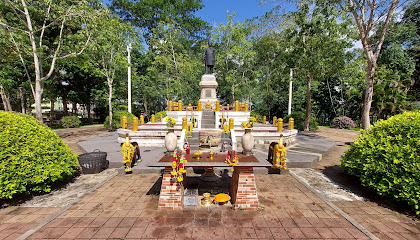
Thung Khai Botanic Garden (also signed Peninsula Botanic Garden)
Discover the breathtaking beauty of Thung Khai Botanic Garden in Trang, Thailand, where nature flourishes and tranquility reigns.

Kantang Hot Spring Forest Park
Discover tranquility in the heart of nature at Kantang Hot Spring Forest Park, a rejuvenating destination with soothing thermal waters and lush landscapes.

Trang Railway Station Walking Street
Immerse yourself in the lively atmosphere of Trang Railway Station Walking Street, where delicious street food meets vibrant local culture in Thailand.

Pak Meng
Discover Pak Meng, a tranquil beach paradise in Thailand’s Trang province, where golden sands meet azure waters for an unforgettable escape.

Trang Andaman Gateway
Discover the tranquil beauty of Trang Andaman Gateway, a serene park offering lush landscapes and cultural experiences in Thailand's scenic Trang region.

Hat Yao Pier
Explore the natural beauty and vibrant marine life at Hat Yao Pier, a serene gateway to the stunning islands of Trang, Thailand.

Phraya Ratsadanupradit Mahison Phakdi Museum
Explore Thailand's rubber legacy at the Phraya Ratsadanupradit Mahison Phakdi Museum in Kantang, where history and culture come alive.
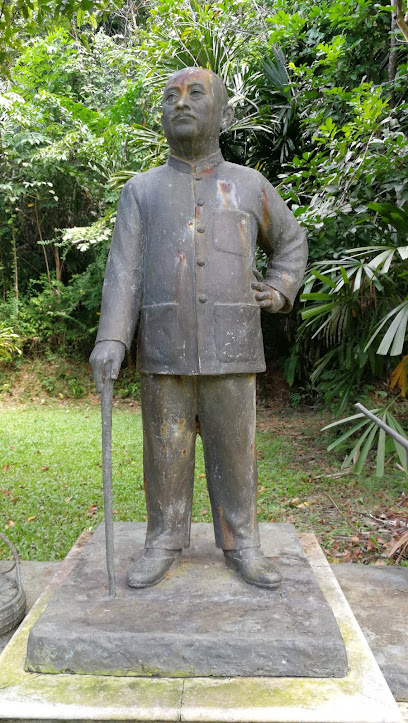
Unmissable attractions to see
Cinta Trang Market
Experience the vibrant Cinta Trang Market in Trang, Thailand, a lively night market filled with delicious street food and unique local crafts.

Tham Le Khao Kob
Explore the stunning Tham Le Khao Kob cave system in Trang, Thailand, a natural wonder filled with breathtaking geological formations and serene waterways.

Hat Chao Mai National Park
Experience the breathtaking beauty of Hat Chao Mai National Park, a haven for nature lovers in Thailand's Trang province, with diverse ecosystems and stunning landscapes.

Trang Clock Tower
Discover the charm of Trang Clock Tower, a vibrant landmark embodying the spirit of Trang, Thailand, surrounded by local shops and authentic street food.
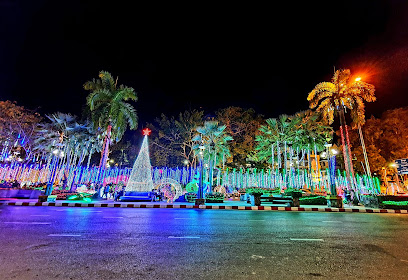
Cinta Garden
Explore Cinta Garden in Trang, Thailand: A vibrant night market filled with local delicacies, unique crafts, and the spirit of Thai culture.

Phraya Ratsadanu Pradit Mahisara Phakdi Monument
Explore the Phraya Ratsadanu Pradit Mahisara Phakdi Monument, a cultural gem in Trang, Thailand, rich in history and serene beauty.

Thung Khai Botanic Garden (also signed Peninsula Botanic Garden)
Explore the stunning diversity of plant life at Thung Khai Botanic Garden, a serene escape in Trang, Thailand perfect for nature lovers.

Kantang Hot Spring Forest Park
Experience the healing waters of Kantang Hot Spring Forest Park, a tranquil escape in Thailand's lush outdoors.

Rajamangala Aquarium Trang
Experience the vibrant underwater life at Rajamangala Aquarium Trang, a premier destination for ocean enthusiasts and families in Thailand.

Trang Andaman Gateway
Discover the tranquil beauty of Trang Andaman Gateway, a stunning park offering lush landscapes and breathtaking coastal views in Thailand's Andaman region.

Phraya Ratsadanupradit Mahison Phakdi Museum
Explore the captivating history and culture of Trang at Phraya Ratsadanupradit Mahison Phakdi Museum, a must-see for every traveler.

Garnet Beach (Charlie Beach)
Experience the tranquil beauty of Garnet Beach (Charlie Beach) on Ko Muk Island, a hidden gem for nature lovers and beach enthusiasts in Thailand.

Princess Mothers 95 Public Park
Explore the serene beauty and recreational offerings of Princess Mothers 95 Public Park in Mueang Trang, a must-visit natural escape in Thailand.

Amazing Khao Mai Kaeo
Explore the breathtaking landscapes and rich culture of Amazing Khao Mai Kaeo, a must-visit destination in Trang, Thailand.

Trang Church
Explore the serene beauty and rich history of Trang Church, a stunning Protestant church and a cultural gem in the heart of Trang, Thailand.

Essential places to dine
Laytrang 2 restaurants
Experience the vibrant flavors of Thailand at Laytrang 2, where authentic dishes and delightful dim sum await every food lover.
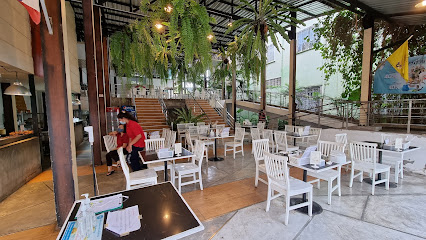
Trang Moo Yang
Experience authentic Southern Thai cuisine at Trang Moo Yang, where every dish tells a story of local tradition and flavor.
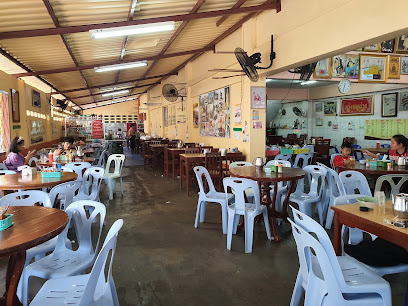
ริชชี่ ตรัง (Richy Trang)
Discover authentic Thai cuisine at Richy Trang, where every dish tells a story of local flavors and traditions in a warm and inviting atmosphere.

Kim Restaurant (Thai-Chinese Style)
Experience the vibrant fusion of Thai and Chinese cuisine at Kim Restaurant in Trang, where every dish tells a story.

Ban Suan Sudaporn Restaurant
Experience authentic Thai cuisine at Ban Suan Sudaporn Restaurant in Trang - where flavor meets tradition.

Si Fa
Discover authentic Cantonese cuisine at Si Fa in Trang – where every dish tells a story of tradition and flavor.

Koh Mook City Center Restaurant&Bar
Discover authentic Thai flavors at Koh Mook City Center Restaurant & Bar - where delicious cuisine meets warm hospitality in Trang.

Go choice Restaurants
Savor authentic Thai cuisine at Go Choice Restaurants in Trang - a culinary gem offering delectable dishes and warm hospitality.

GUAVA. American & Mexican Restaurant
Experience the vibrant fusion of American and Mexican flavors at GUAVA, where every meal is a celebration of taste in Trang.
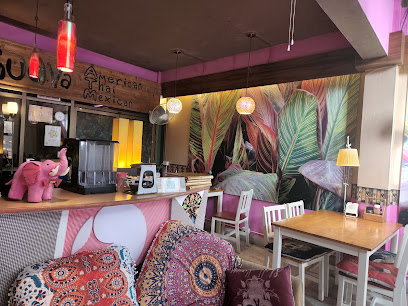
Lion’s Tale Trang
Experience the best of Thai and Western cuisine at Lion's Tale Trang – where flavor meets hospitality in a vibrant atmosphere.

ComeBack Trang Bar & Restaurant
Discover authentic Thai flavors at ComeBack Trang Bar & Restaurant, where vibrant nightlife meets delicious local cuisine in the heart of Trang.
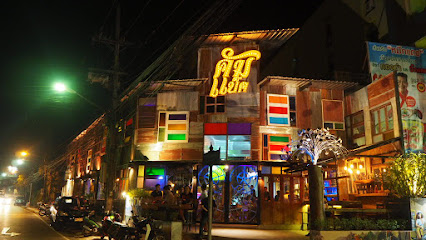
Mamma Mia
Discover authentic Italian flavors at Mamma Mia in Trang - your go-to destination for delicious pizzas and pastas in Thailand.

Hilltop Restaurant
Experience exquisite Thai cuisine with breathtaking views at Hilltop Restaurant on Ko Mook Island.

Cafe 1952
Discover Café 1952 in Trang: A delightful restaurant blending vintage charm with authentic Thai flavors.

Hidden Something (A rooftop bar & bistro)
Discover Hidden Something in Trang: A rooftop bar & bistro offering stunning views and exquisite Thai cuisine for an unforgettable dining experience.

Markets, malls and hidden boutiques
Robinson Lifestyle Trang
Explore Robinson Lifestyle Trang, a vibrant shopping paradise in the heart of Trang, offering diverse products and delicious dining options.

Cinta Trang Market
Discover the vibrant flavors and unique crafts at Cinta Trang Market, a must-visit night market in Trang, Thailand.

Trang Clock Tower
Discover the charm of Trang Clock Tower, a stunning landmark reflecting the rich culture and history of Trang, Thailand.
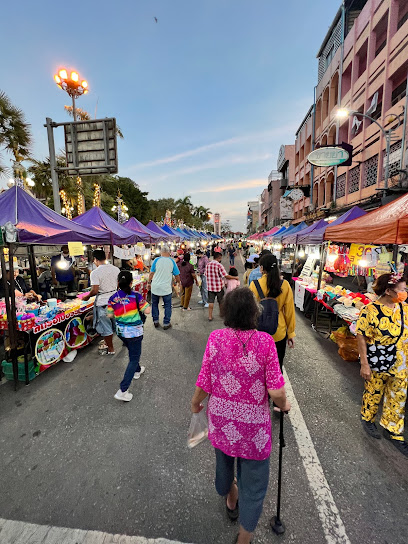
Cinta Garden
Experience the vibrant flavors and rich culture of Trang at Cinta Garden Night Market, where delicious street food and local crafts await.

Gray 18 Cafe
Discover the charm of Gray 18 Cafe in Trang, where exceptional coffee meets a cozy atmosphere for an unforgettable experience.

Siriban Shopping Center
Explore the vibrant Siriban Shopping Center in Trang, a shopping haven blending local culture, unique boutiques, and delightful dining experiences.

Trang Railway Station Walking Street
Immerse yourself in the local culture at Trang Railway Station Walking Street, where culinary delights and vibrant crafts await every visitor.

Kipbox Hotel Trang
Experience the charm of nature at Kipbox Hotel Trang, where cozy accommodations meet lush gardens and delightful coffee.

ミ Green House ณ ตรัง :)
Experience the heartwarming ambiance and delightful brews at ミ Green House, a must-visit coffee shop in Trang, Thailand.

Hawken Fine Coffee Brewers
Experience the best of Trang's coffee culture at Hawken Fine Coffee Brewers, where every cup tells a story of craftsmanship and passion.

วัตสัน สิริบรรณ ตรัง
Discover a world of beauty and wellness at Watsons Siribun Trang, your comprehensive health and beauty destination in Thailand.
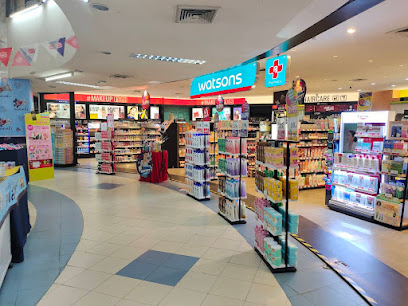
Tops Robinson Trang
Explore Tops Robinson Trang for an authentic shopping experience, offering local delicacies and everyday essentials in the heart of Trang, Thailand.

THE BIZ AVENUE
Experience the vibrant shopping and culinary delights at The Biz Avenue, the premier shopping destination in Trang, Thailand.

สุภัสสรณ์ โอชา
Discover authentic Chinese pastries and a welcoming atmosphere at Supatsorn Ocha, a local favorite in Trang, Thailand.

WATSONS ROBINSON TRANG 1F
Explore Watsons Robinson Trang, the ultimate health and beauty shop in Thailand for cosmetics, pharmacy essentials, and unique local products.

Essential bars & hidden hideouts
GUAVA. American & Mexican Restaurant
Experience the best of American and Mexican cuisine at GUAVA, a vibrant restaurant in Trang, Thailand, perfect for food lovers and social gatherings.
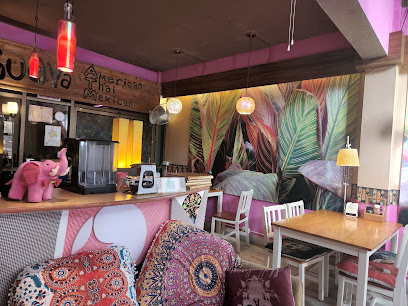
Lion’s Tale Trang
Experience the vibrant flavors of Italian, Thai, and Western cuisine at Lion's Tale Trang, a top restaurant and cocktail bar in the heart of Thailand.

Mong Bar Koh Mook
Discover the serene beauty of Mong Bar Koh Mook, where exquisite cocktails meet breathtaking ocean views in a tropical paradise.

Lion’s Tale Trang
Experience the perfect blend of Italian and Thai cuisine at Lion’s Tale Trang, where vibrant nightlife meets culinary excellence.

มหานคร@ตรัง ค่ำคืนแห่งมิตรภาพ
Enjoy the lively atmosphere and creative cocktails at มหานคร@ตรัง, Trang's top bar for unforgettable nightlife experiences.

ComeBack Trang Bar & Restaurant
Experience the vibrant flavors of Thailand at ComeBack Trang Bar & Restaurant, where culinary creativity meets a lively atmosphere in the heart of Trang.

ComeBack Trang Bar & Restaurant
Discover the vibrant nightlife of Trang at ComeBack Trang Bar & Restaurant, where delightful cuisine meets a lively bar experience.

Limoncino Ristorante e Enoteca
Savor authentic Italian cuisine and exquisite wines at Limoncino Ristorante e Enoteca, a premier dining experience in Trang, Thailand.

Hidden Something (A rooftop bar & bistro)
Discover the enchanting rooftop dining experience at Hidden Something, where stunning views and exquisite cuisine create unforgettable moments in Trang.

Hidden Something (A rooftop bar & bistro)
Experience the best rooftop dining in Trang at Hidden Something, where breathtaking views and delightful cuisine come together for an unforgettable evening.

ร้านดูสบาย
Discover the serene charm of ร้านดูสบาย, a tranquil bar in Trang offering refreshing drinks and a cozy atmosphere for relaxation.

Wine Corner Bar & Bistro Trang
Savor exquisite dishes and fine wines at Wine Corner Bar & Bistro in Trang, a culinary gem blending local and international flavors.

Wine Corner Bar & Bistro Trang
Experience a delightful fusion of local flavors and fine wines at Wine Corner Bar & Bistro, Trang's hidden culinary gem.

Warm up bar Trang
Experience the vibrant nightlife at Warm Up Bar Trang, where delicious drinks and live music create an unforgettable atmosphere.

Casa del Vino Est.1956 Ristorante Italiano
Savor authentic Italian dishes and an extensive wine selection in the heart of Trang at Casa del Vino Est. 1956.

Local Phrases
-
- Helloสวัสดี
[sawasdee] - Goodbyeลาก่อน
[laa kon] - Yesใช่
[chai] - Noไม่
[mai] - Please/You're welcomeโปรด/ยินดี
[bproht/yindee] - Thank youขอบคุณ
[khob khun] - Excuse me/Sorryขอโทษ
[khaw toht] - How are you?สบายดีไหม
[sabai dee mai] - Fine. And you?สบายดีค่ะ คุณล่ะ
[sabai dee ka khun la] - Do you speak English?คุณพูดภาษาอังกฤษได้ไหม
[khun poot paa saa ang-grit dai mai] - I don't understandฉันไม่เข้าใจ
[chan mai khao jai]
- Helloสวัสดี
-
- I'd like to see the menu, pleaseขอดูเมนูหน่อย
[khaw doo menu noi] - I don't eat meatฉันไม่กินเนื้อ
[chan mai gin nuea] - Cheers!ชนสิ
[chon si] - I would like to pay, pleaseขอจ่ายเงินหน่อย
[khaw jai ngern noi]
- I'd like to see the menu, pleaseขอดูเมนูหน่อย
-
- Help!ช่วยด้วย
[chuai duay] - Go away!ไปไกลๆ
[pai glai glai] - Call the Police!โทรตำรวจ
[thor tam-ruat] - Call a doctor!โทรหมอ
[thor mor] - I'm lostฉันหลงทาง
[chan long tang] - I'm illฉันไม่สบาย
[chan mai sabai]
- Help!ช่วยด้วย
-
- I'd like to buy...ฉันอยากซื้อ...
[chan yak sue...] - I'm just lookingฉันแค่ดูอย่างเดียว
[chan khae doo yang diao] - How much is it?ราคาเท่าไหร่
[ra-ka thao rai] - That's too expensiveแพงเกินไป
[paeng gein pai] - Can you lower the price?ลดราคาได้ไหม
[lot ra-ka dai mai]
- I'd like to buy...ฉันอยากซื้อ...
-
- What time is it?กี่โมงแล้ว
[gee mong laeo] - It's one o'clockเวลาหนึ่งโมง
[welaa nueang mong] - Half past (10)สามสิบครึ่ง
[sam sip khreung] - Morningเช้า
[chao] - Afternoonบ่าย
[bai] - Eveningเย็น
[yen] - Yesterdayเมื่อวาน
[meua waan] - Todayวันนี้
[wan nee] - Tomorrowพรุ่งนี้
[phrung nee] - 1หนึ่ง
[nueang] - 2สอง
[song] - 3สาม
[sam] - 4สี่
[see] - 5ห้า
[ha] - 6หก
[hok] - 7เจ็ด
[jet] - 8แปด
[paet] - 9เก้า
[gao] - 10สิบ
[sip]
- What time is it?กี่โมงแล้ว
-
- Where's a/the...?...อยู่ที่ไหน
[... yu tee nai] - What's the address?ที่อยู่อยู่ที่ไหน
[tee yu yu tee nai] - Can you show me (on the map)?ช่วยแสดงให้ดูหน่อยได้ไหม
[chuai sa-deng hai doo noi dai mai] - When's the next (bus)?รถเมล์ตอนไหนถึง
[rote mel dton nai teung] - A ticket (to ....)ตั๋ว (ไป...)
[dtua (bpai...)]
- Where's a/the...?...อยู่ที่ไหน
History of Trang
-
Trang has been an important hub for maritime trade since ancient times. Located on the Andaman Sea, it was part of the trade routes that connected the Malay Peninsula to India, China, and the Middle East. Ships carrying spices, silk, and other valuable goods would often dock at Trang's ports, making it a bustling center of commerce and cultural exchange.
-
Buddhism arrived in Trang around the 3rd century BCE during the reign of Emperor Ashoka of India. The religion spread rapidly through the region, and many temples and stupas were constructed. Today, Trang is home to several ancient Buddhist temples, including Wat Tantayapirom Phra Aram Luang, which stands as a testament to the city's long-standing spiritual heritage.
-
In the late 19th century, Trang became one of the first places in Thailand to cultivate rubber trees. This led to a significant economic boom, attracting workers and entrepreneurs from various parts of the country and beyond. The rubber industry transformed Trang into a prosperous city and played a crucial role in its development.
-
Chinese immigrants began settling in Trang in large numbers during the 19th and early 20th centuries. They brought with them their unique culture, cuisine, and business acumen. The Chinese community has had a lasting impact on Trang, contributing to its diverse cultural landscape. Chinese temples, festivals, and markets are an integral part of the city's identity.
-
During World War II, Trang was occupied by Japanese forces as part of their broader campaign in Southeast Asia. The occupation period saw the construction of infrastructure, including roads and railways, which facilitated troop movements. While this era was marked by hardship, it also led to significant infrastructural developments that benefitted the region in the long run.
-
After World War II, Trang underwent rapid modernization. The construction of new roads, schools, and hospitals helped improve the quality of life for its residents. Economic activities diversified beyond rubber, incorporating tourism, fishing, and agriculture. The city's blend of tradition and modernity continues to attract both locals and tourists.
-
Trang is renowned for its vibrant festivals, which reflect its rich cultural tapestry. The Trang Vegetarian Festival, influenced by Chinese traditions, is celebrated with great fervor and features processions, rituals, and delicious vegetarian dishes. Another notable event is the Trang Underwater Wedding Ceremony, where couples dive underwater to exchange vows, highlighting the city's connection to the sea.
Trang Essentials
-
Trang is accessible by air, rail, and road. Trang Airport (TST) offers domestic flights, mainly connecting through Bangkok's Suvarnabhumi and Don Mueang airports. By train, you can reach Trang from Bangkok's Hua Lamphong Railway Station, with the journey taking approximately 15 hours. Buses from Bangkok’s Southern Bus Terminal also offer a more budget-friendly option, taking around 12 hours.
-
Once in Trang, getting around is relatively easy. Tuk-tuks and motorbike taxis are common for short distances. Songthaews (shared pickup trucks) operate on fixed routes and are an economical way to travel. For more convenience, you can rent a car or a motorbike. Car rentals are available at the airport and in the city center.
-
The official currency is the Thai Baht (THB). Credit and debit cards are widely accepted in hotels, restaurants, and larger shops, but it's advisable to carry cash for smaller vendors and local markets. ATMs are plentiful, and currency exchange services are available at the airport and in major tourist areas.
-
Trang is generally safe for tourists. However, like any destination, it’s important to remain cautious. Avoid isolated areas at night and keep an eye on your belongings in crowded places. Be particularly cautious in areas around the train and bus stations, as petty theft can occur.
-
In case of an emergency, dial 191 for police assistance and 1669 for medical emergencies. Trang Hospital is the main medical facility in the area. Pharmacies are widely available for minor health issues. It’s strongly recommended to have travel insurance that covers health emergencies.
-
Fashion: Do dress modestly, especially when visiting temples; shoulders and knees should be covered. Avoid overly revealing clothing. Religion: Do show respect when visiting religious sites. Remove your shoes before entering and speak softly. Public Transport: Do be polite and offer your seat to monks, elderly, and pregnant women. Don’t eat or drink on public transport. Greetings: Do greet locals with a 'wai' (palms pressed together in a prayer-like gesture) and a slight bow. Eating & Drinking: Do try local dishes and accept food with your right hand. Don’t point your feet at people or religious objects, as it is considered disrespectful.
-
To experience Trang like a local, visit the night markets such as Cinta Garden for delicious street food. Take a stroll in the Trang Railway Station area, which is bustling with local life. Don’t miss the annual Trang Underwater Wedding Ceremony, a unique cultural event. For a more authentic experience, explore the lesser-known caves and waterfalls in the surrounding areas.
Trending Landmark in Trang
-
Robinson Lifestyle Trang
-
Cinta Trang Market
-
Tham Le Khao Kob
-
Hat Chao Mai National Park
-
Trang Clock Tower
-
Cinta Garden
-
Dragon Tree Sculpture Garden
-
Phraya Ratsadanu Pradit Mahisara Phakdi Monument
-
Thung Khai Botanic Garden (also signed Peninsula Botanic Garden)
-
Kantang Hot Spring Forest Park
-
Trang Railway Station Walking Street
-
Pak Meng
-
Trang Andaman Gateway
-
Hat Yao Pier
-
Phraya Ratsadanupradit Mahison Phakdi Museum
Nearby Cities to Trang
-
Things To Do in Krabi
-
Things To Do in Nakhon Si Thammarat
-
Things To Do in Satun
-
Things To Do in Langkawi
-
Things To Do in Phuket
-
Things To Do in Surat Thani
-
Things To Do in Koh Samui
-
Things To Do in George Town
-
Things To Do in Penang
-
Things To Do in Ranong
-
Things To Do in Kota Bharu
-
Things To Do in Chumphon
-
Things To Do in Ipoh
-
Things To Do in Cameron Highlands
-
Things To Do in Medan












